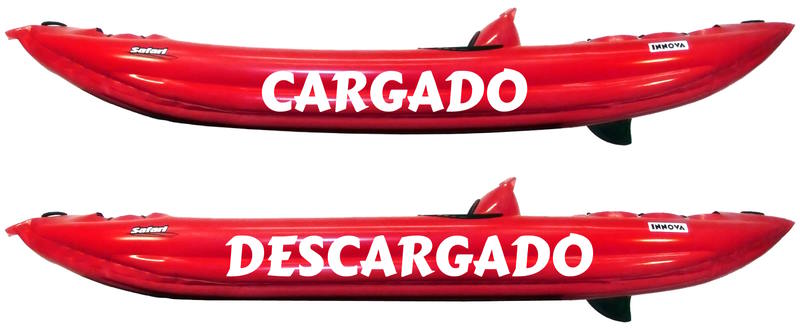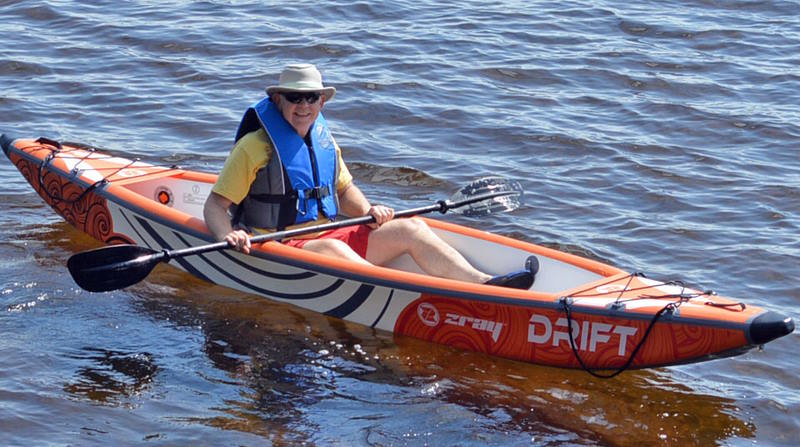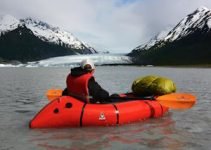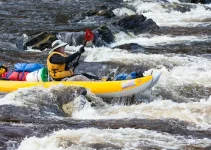Inflatable kayaks are great for many reasons. One problem they have is that they bend when loaded. Or when a wave hits them. There have been solutions for a long time, but the high-pressure kayak is the best option. The proof is that leading brands like Decathlon or Tahe are betting on this option.
A kayak bending has advantages, such as resisting impacts or clearing obstacles (logs, ramps…). But in open water like lakes or the sea, it is a significant drawback. If the navigability of an inflatable kayak is not optimal, it’s worse if it bends.

Dropstitch panels were created when everything was in black and white. At that time, it was only used in aeronautical and military environments. But, a few years ago, a sport called SUP or paddle surfing exploded, which has made this material affordable. I think this is largely due to the development of robotic machines that manufacture them.
THE SECRET OF THE HIGH-PRESSURE KAYAK
Dropstitch panels are two sheets of PVC joined by thousands of nylon threads at the same distance. Then other layers are applied, and the edges are closed. This way, we can crank it up with the amount of air we put in, it tensions the threads, and significant firmness is achieved.
Told like that, it sounds easy, but the panels must have a minimum thickness of 6 cm and, in principle, the same thickness. You start to see manufacturers making pieces that deviate from that flat shape, such as in the Decathlon Itiwit. But those flat panels have limitations. But to be positive, kayaks of more than 4 meters are achieved with a very valid rigidity.

I must also warn you that there are few inflatable kayak manufacturers; the main one, Woosung from Korea, manufactures in China, which means that you will see very similar solutions in high-pressure kayaks.
DROPSTITCH HULL
Many manufacturers, in order to achieve affordable models, opt for a dropstitch hull. Let’s not forget that these panels have become cheaper but increase the price, and you will see it in mid-to-high-end boats.
This configuration allows the kayak to have its bottom, made of very resistant material to withstand rubbing and rough handling. And on top of that, the drop-stitch panel is placed, but it has a series of notches that allow the water and sand that may enter to go there. That’s great for washing it well. We remove the high-pressure floor, and we can give it a lot of water and all the water or sand goes through a plug.
The sides are still round in most cases. Decathlon has opted for this configuration in its entry-level inflatable kayaks. And other brands. This way, rigidity is gained without pushing prices up to the level of a rigid kayak.

FULL DROPSTITCH KAYAK
In this option, the three pieces of the kayak (bottom and two sides) are made of dropstitch panels. An outer layer joins them to protect the bottom above all, and to give shape to the structure. The thing is that with this configuration, hulls are achieved that are more reminiscent of a canoe than a kayak. Very stable in calm waters, but easy to capsize when everything moves.

Also, although there are several options, there remains an inaccessible space between the panels and the bottom where it is very difficult to clean and it is costly to remove moisture. Manufacturers place plugs and slots to evacuate the water, but they do not offer an ideal solution. Most kayaks of this type are open, and are among the most expensive.

Another variant is two drop-stitch panels one on top of the other. One acts as a hull, and the other surrounds your legs. The thing is that that panel is not very high, and you can’t rest your knees. In practice, it is like an open kayak, and in fact they don’t even sell spray skirts or anything to protect you.
DECATHLON HIGH PRESSURE
It has come to break with the rest of the high-pressure kayak designs, and achieves a hull very similar to a closed kayak. Even so, in the opinion of many people, it has its defects. One of the biggest is that the cockpit area is not as rigid as it needs to be to be able to edge. And it also doesn’t have the provision to attach a rudder. And although it can be closed with a cover, it is not easy to put on and prevent water from entering.

Even so, it has a very groundbreaking price, and I don’t know how it has done it but it has no imitators. I have not seen one in person, but I know people who have it and are very happy.
THE FUTURE OF THE INFLATABLE KAYAK
Apparently, traditional inflatable kayaks will not disappear, but they will lose ground to high-pressure kayaks. In any case, I think everything will add up to make this world more popular and accessible.



